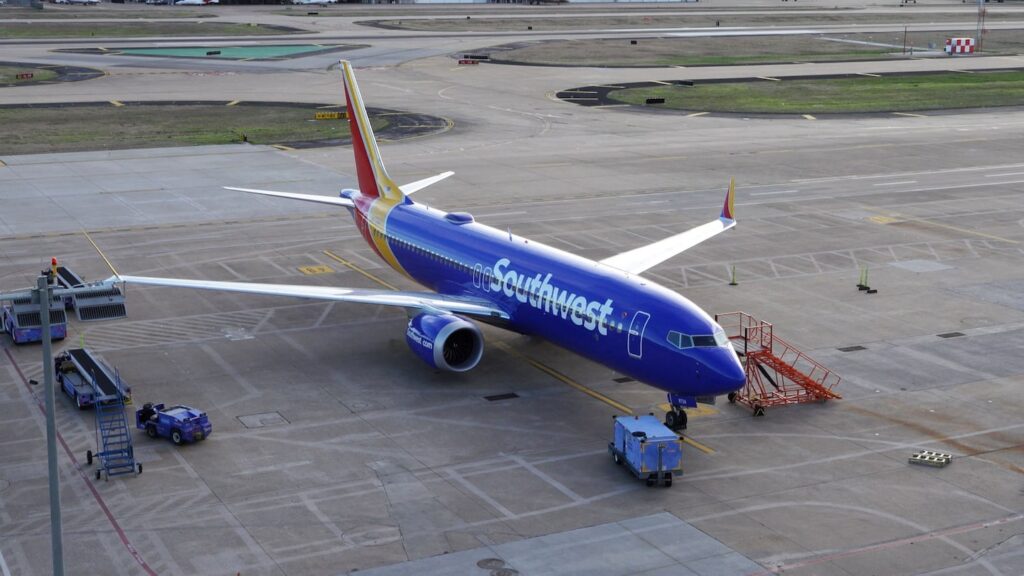Federal authorities are investigating an “in-flight vibration event” that occurred on a Boeing 737 MAX 8 plane during a Southwest Airlines flight in late May.
The Federal Aviation Administration (FAA) and the National Transportation Safety Board said they were investigating the “Dutch roll” that occurred during a flight from Phoenix, California, to Oakland. No injuries were reported among the 175 passengers and six crew members on board, according to a preliminary FAA report.
Boeing has been under intense scrutiny since a door plug exploded during an Alaska Airlines flight in January, and the company this week disclosed quality problems with its 787 Dreamliner jets. The FAA is also investigating how some Boeing and Airbus planes were fitted with titanium with false documentation.
The NTSB said in a statement that the Southwest Airlines plane was flying at an altitude of 34,000 feet when it experienced the Dutch roll accident at approximately 8 a.m. on May 25.
A Dutch roll occurs when a plane rolls, or tilts, from side to side, causing the tail to move from side to side in a motion called yawing, which gets its name from an ice-skating technique popular in the Netherlands. While the maneuver isn't dangerous in most cases, “it can be very uncomfortable for passengers,” Eric Weidler, director of the University of Oklahoma's School of Aeronautics, said in an email.
“The aircraft may simultaneously roll from side to side and experience a left to right pitch of the nose,” Boeing said in a post on its website about Dutch roll. The movement, which can be caused by wind or pilot action, “sets off a series of vibrations that continue until the movements stop on their own or are corrected by the pilot,” Boeing said.
Widela said pilots are trained to recognize and correct Dutch roll, but planes are also equipped with a system called a yaw damper that automatically counters the movement.
In the case of the Southwest Airlines accident, the FAA's initial report stated that the crew “regained control.” According to the NTSB, airlines performing maintenance after the accident found damage to several structural components. The FAA's initial report stated that there was damage to the “standby PCU,” or power control unit.
John Cox, a former airline pilot and lecturer at the University of Southern California, said in an interview that the information available so far about the incident “leaves more questions than answers.”
He said the Dutch roll is a “natural aerodynamic condition” that should naturally dampen in a 737. He said such a movement has caused pilots to lose control of other aircraft in the past, but he has never heard of a Dutch roll resulting in damage on a 737.
“It's unusual for a Dutch roll accident to happen,” said Cox, CEO of the consulting firm Safety Operating Systems. “It's unprecedented for an accident to occur that has caused harm.”
According to the FAA, investigators are looking into whether a damaged power control unit contributed to the unexpected movement or whether the movement caused the damage.
Southwest Airlines reported the accident and damage to the NTSB on June 7. The safety board said it had received data from the plane's flight data recorder, which it said would help investigators determine “the duration and severity of the incident.” The cockpit voice recorder, which can only store up to two hours of audio, had been overwritten.
Flight tracking data showed the plane took off from Oakland on June 6 and was headed to Everett, Washington, where it has remained since. The FAA released more information about the accident on Wednesday.
A preliminary report from the NTSB is expected to be released within 30 days of the May 25 accident.
Southwest said it was “participating in and assisting with the investigation” and referred questions to the FAA and NTSB. Boeing declined to answer questions, referring them to Southwest.
The incident had not been widely reported until an article about it was published Wednesday by the Aviation Herald, a website that covers aviation industry incidents and news.



